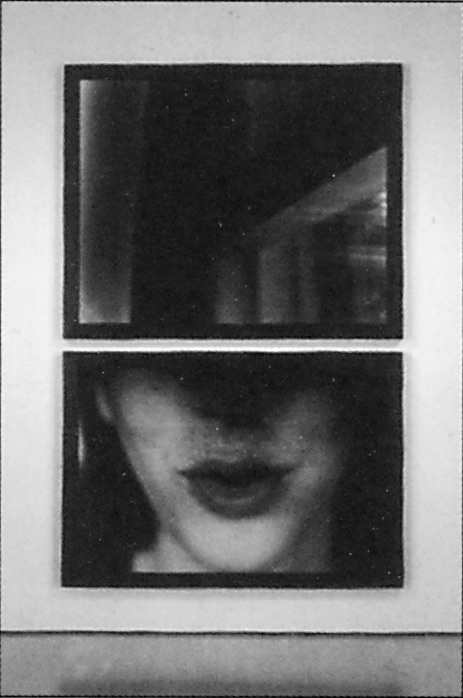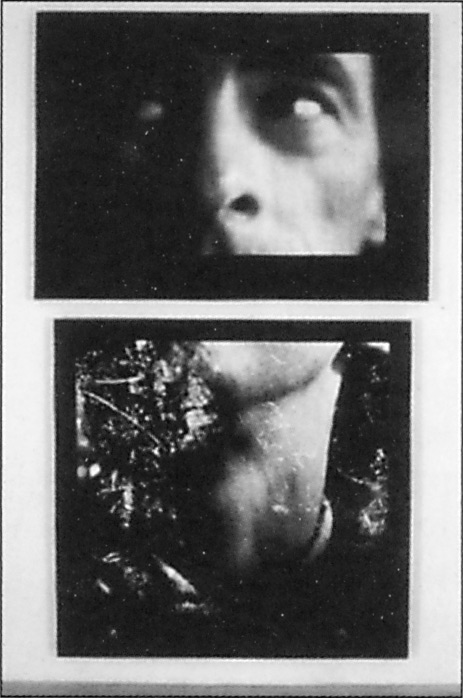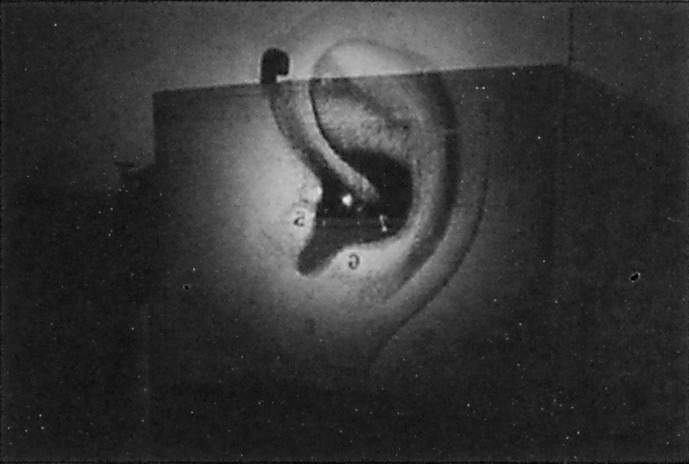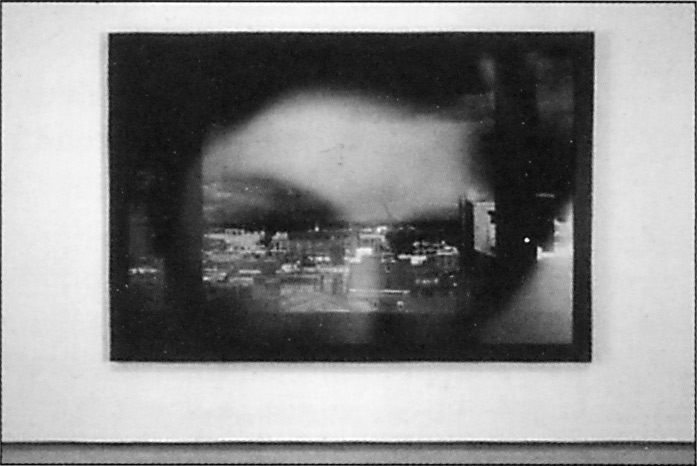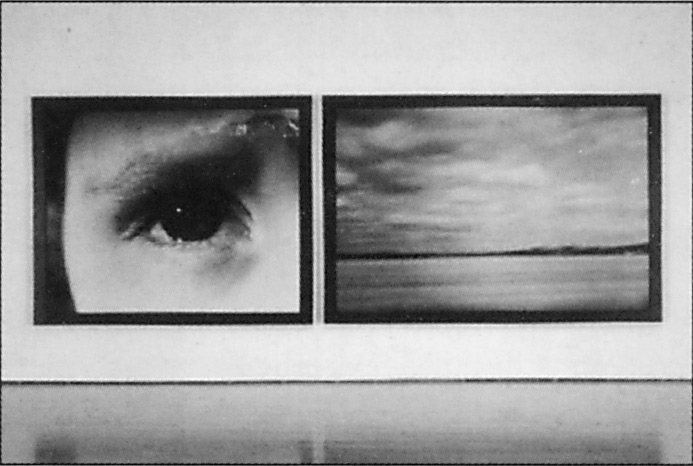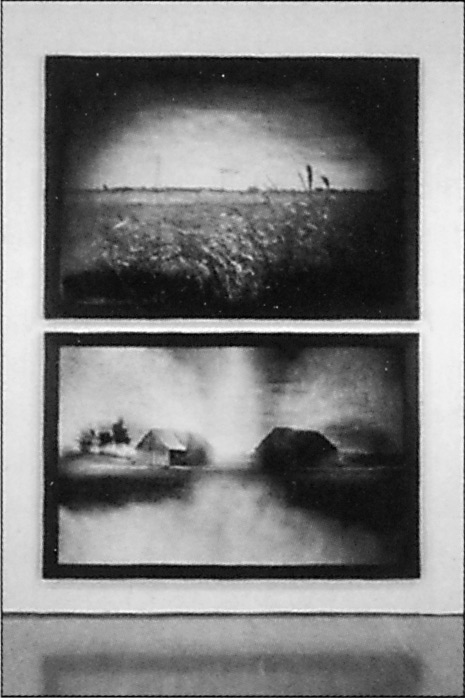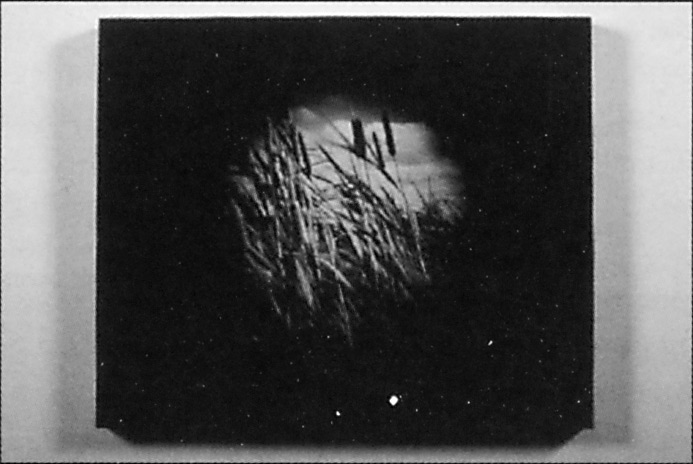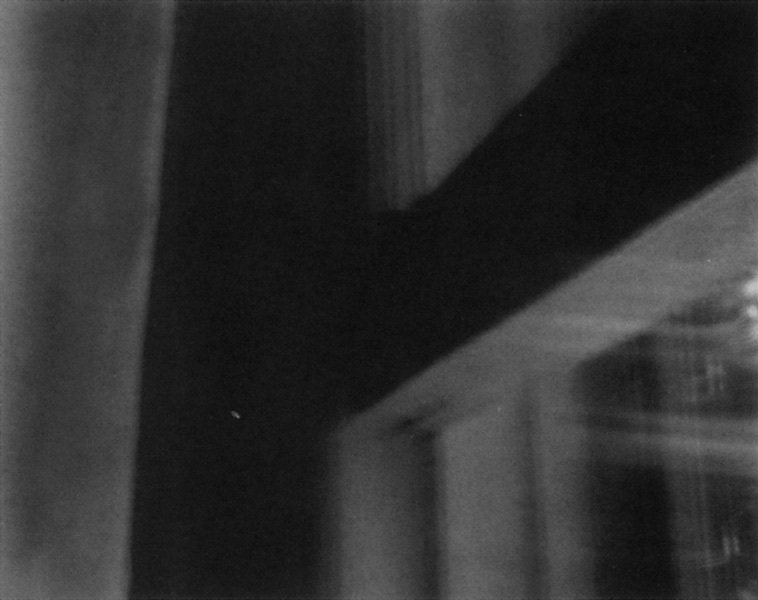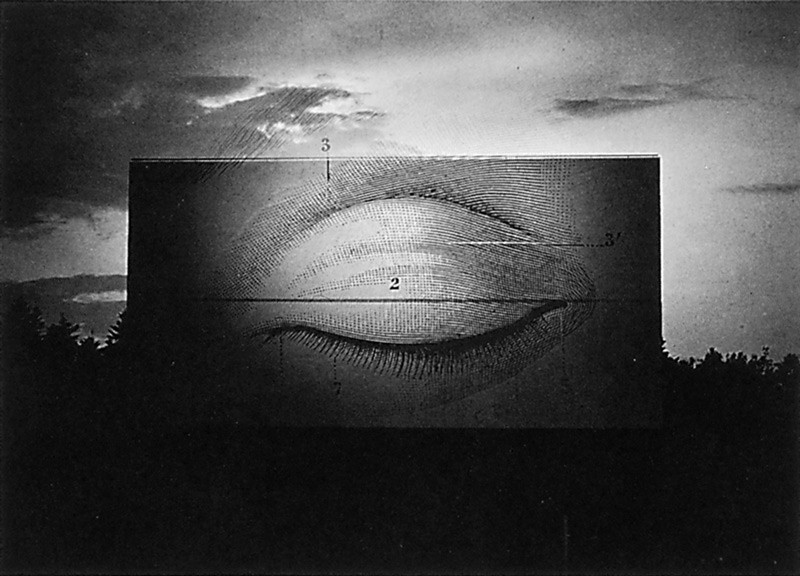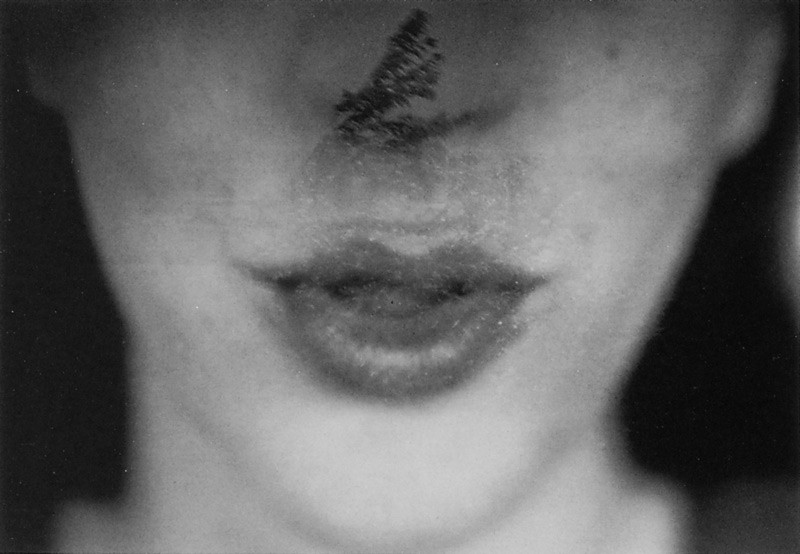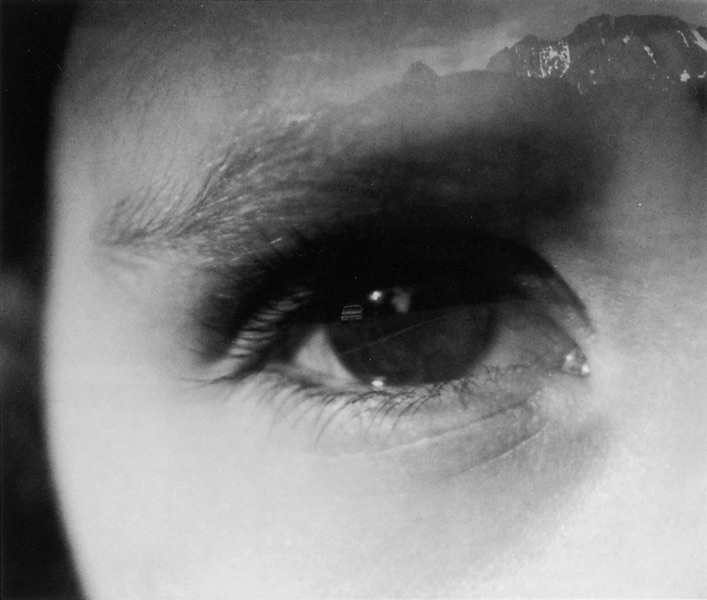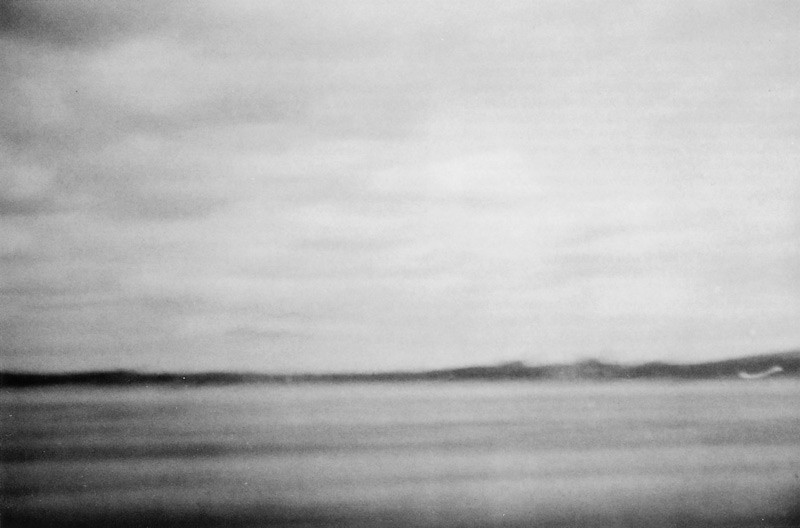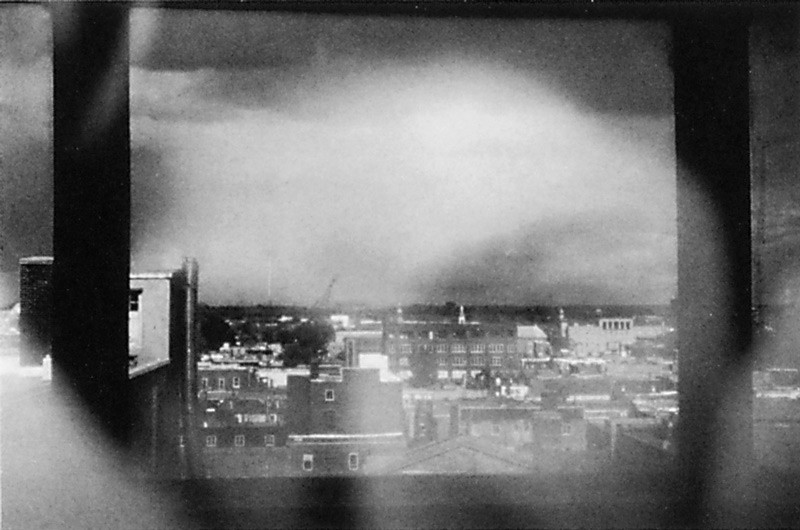[Winter 1994-1995]
by Manon Gosselin
“… imagine!… whole body like gone… just the mouth… lips… cheeks… aws… never- …what?… tongue?… yes… lips… heeks… aws… tongue… never still a second… outh on fire… stream of words… in her ear… radically in her ear…not catching the half… not the quarter… no idea what she’s saying… imagine!…”
⎯ Samuel Beckett, Not I, 1972
The photographic image is a fixed lure, one that neither talks nor moves. When exhibited, it quickly reinstates the operations that render intelligible the accents of its form. The photographic trial arises with each threat of usage. It resurfaces with every definitive fixing, with the taking of the photograph, when manipulation and revelation capture each other, affording the creation of a clearly fabricated image.
Of the two fundamental postures at work in the making of the photographic image, the first is the one that reveals photography as a passive vehicle for recording and signifying. Calling upon photography’s metonymical force, this first operation causes the reading of the image to be immediately oriented toward its referent, toward the seized fragment of reality. As a consequence, the photographic image simulates the what-has-been (ça-a-été, Barthes), while dissimulating the constructed effort at the origin of its revelation. Adopting this particular method, photography is thus able to reconstitute the illusion of an already-constituted real, of a real that would not have been constructed had it not been startled by the lens. Therefore, in spite of the lack-of-being that constitutes its very essence, the photographic image drastically pretends to be.
Then there is this other posture that accumulates threatening gestures – manipulations, cuts, super-impositions, maskings. With regard to photography as imprint, this method calls an excess of attention to photography’s lack-of-being. In this perspective, the photographic image would appear to be the residue of a trial of fabrication, bringing into sight the tensions and distortions between the photographic sign and its referent. Wishing to substitute a construction for an imprint, this second posture seeks above all to rid itself of the indicial character proper to the photographic tradition. It becomes a threat to evocative power, to the truth of time adhering to the grasped fragment of reality. It liberates itself in order to reinstate a visual reality that is no more than a condensed product of procedures of selection, transformation, interposition and distortion. Consequently, the photographic here (the photographic image as seen during its exhibition) slips away after having been worked on in the aftermath of its taking – the referent’s there.
Sylvie Readman’s photographic trial fully embraces this last approach. It is by pointing out, by means of constructed photographic images, the presuppositions or assumptions underlying the practice of photography that she is able to deviate the regard – the spectatorial consciousness (Barthes) – fascinated with the apparent objectivity of the photographic image.
By calling attention to photography’s lacunary aspects (its immobility, its muteness, its mimesis, its decisive cut, its adherence) in light of painting, film, and the performed act, Sylvie Readman constructs an iconic world, removed from the real. Through its will to relate and its ostentatious lack, her construction strives to bring about an event of portraiture.
Indeed, these images produced by Readman in 1993 attempt to photographically fix something of the portrait. With the exception of Mirare, they belong to the series Champs d’éclipses (Ecliptic Fields)}.1 As an introduction to this sequence, Readman wrote:
At the origin of this project was the desire to bring together a model, the camera and myself. These convergences that were to orient my reflection on the portrait were conceived here, and above all, as a photographic experimentation with friends or family. Born of these specific explorations, the photographic act evolved progressively toward an experience related, in certain ways, to the figure of an eclipse.
Considering the photographic devices at work in Champs d’éclipses, we cannot help but notice the occultation of the name (whom is this portrait of?), the obnubilation of a deconstructed and enlarged body (to whom does this body belong, who does it resemble?), and the obscuration caused by the superimposed fragments of landscape that mask the traits of a face, unable, thus, to fix the portrait or self-portrait.
Occultation, obnubilation, obscuration, and superimposition are ecliptic figures. The portrait is figured insofar as the photographic procedures that partially occult it, distract it, allow. As a consequence, the portrait is made manifest through a movement of push and pull, of appearance and disappearance. Had the artist not chosen to refer to her work as portraiture – “these convergences that were to orient my reflection on the portrait were conceived here, and above all… ” – its identity as such would have most probably remained unknown.
These portraits portray in the aftermath of the taking (of the image), in the reflection (the mental image) that the photographer and the viewer, by projecting themselves, create of models – friends, family, man, woman, child, themselves.
The portrait is intrigued by its very absence. It is dismembered. It is no more than a mouth, a cheek, an eye, a forehead. It has been eclipsed. It is hardly the portrait of “of…” It is the portrait of the portrait.
Rustling (320 x 206,5 cm) shows a painted, red mouth, open, enormous: the original core of breathing, the orifice of speech. The mouth is nourished, it absorbs and restores. Through it, we reject ourselves outside of ourselves. The painted, talking, mouth of a woman. We hear nothing. Sweeping the upper lip like a feather, a darkened nose, a tree, a graphic representation of the empty space where blows the wind that brings, that changes, that gives the space a direction. With Les Vertus cardinales (1990-1991), Readman was already working with the literal representation of spatial norms, while playing upon photography’s very limits.
How to see speech? Here, photography becomes a photogram (frame) devoid of film, and with guile and artifice (diptych and superimposition) the photographer integrates this lack (photography in lack of film) into the flow of her images. Through a process of superimposition and assemblage, Readman attempts to approach – within the limits of the photographable – the extended duration and unfolding movement of cinematographic fiction.
The photographer creates her images by first meeting with models that she shoots at very close range, recording their presence on slide film. She then projects onto this first image, itself revealed and projected, one or a number of other photographs selected from her own image bank. Once the added element is stabilized, fixed, a new photograph is taken, conventionally printed, re-photographing the projections.
While some may view Readman’s photographic work as a form of palimpsest, as an effacing of writing by writing over the original words, I prefer to describe the technique of her superimposed imagery as a form of suture by projection. The terms suture and projection refer to the vocabulary of both psychoanalysis and cinematography.
In this instance, however, the usage of the term “suture” refers more specifically to cinematography. Its eclipse becomes its presence, shielding the subject’s intimacy from the threat of a prying eye. Indeed, Readman protects and renders anonymous the very subjects she previously approached and intimidated with her lens. The presence of suture2 is made manifest with each abolition of the gap of what is lacking.
Hence, Readman constructs disproportional (contemporary museological scale) fields of amassed narratives (ecliptic fields) by conjuring up the lacks of photographic representation.
To make a portrait, I’m always in want (in lack) of the sound of your voice, of the depth of your eyes, and of the movement of your body in a landscape. So I show you a punctured eye, sutured by projection, insisting on the speed of the passage of time (Opening). So I show you a mouth darkened and sutured by wind-blown trees that are able to restore at least its breath (Rustling). So I show you his absent forehead, his face tilted back, his shut eyes, sutured by the landscape, in order to make you see the traces of the movement of his body (On a Distant Horizon).
Readman’s portraiture calls upon and reaches out to the absent viewer, while directing his or her movements before the image. In so doing, the viewer is invited to project and suture him or herself to the image fields, causing the photographic fiction to take place, and allowing the portrait to be.
Self-portrait at Window (169,5 x 247,5 cm) is undoubtedly the most striking example of this process. Faced with a very large photographic object, the viewer is able to position him or herself at an appropriate distance from the image, in order to seize it in its entirety. He or she may then move closer to the photograph, to observe – in every grain of its surface – the representation of an obscured face, disproportionately enlarged. In approaching the image, the viewer completely eclipses the face, slipping into this other, less hazy image, an urban landscape of Montreal. In fact, by nearing what is far, by wishing to scrutinize distance at a closer range, the viewer causes the face to disappear and appear anew in the realm of the imaginary. Thus, the photograph becomes a scene in which the viewer creates fiction. Readman’s photographic process is poetical in the sense of the French poïétique, as understood by Valéry to mean “the creation of works in which language is both the substance and the means.” In a similar way, by creating a visual object made of photographic images, Sylvie Readman seeks to represent photography’s ability to extend itself, to reach out to the Other, to the absent viewer, while remaining, nonetheless, within the realm of its limits.
Translated by Jennifer Couëlle
1 Champs d’éclipses is also the title of an exhibition of Sylvie Readman’s works presented as part of the Project Series (no 6) at the Musée d’art contemporain de Montréal, in 1993, and travelling throughout the country until 1995.
2 In an article published in Cahiers du Cinéma in 1969, and subsequently translated and published in Screen, in 1977, Jean-François Oudart appropriates the psychoanalytical concept of “suturing,” and integrates it into a cinematographic context. He borrows this term in order to explain the cinematographic attempts (as those of film director Robert Bresson) to integrate the viewer – an absent and moving figure – into the imaginary articulation of filmic process.
Sylvie Readman was born in Québec City, in 1958. She holds a B.A. in visual arts from the Université Laval (Québec City), and an MA in photography from Concordia University (Montreal), in 1988. Since 1982, Sylvie Readman has participated in numerous solo and group exhibitions in Québec, Canada, the United States and Europe. The artist lives and works in Montreal.
Manon Gosselin lives and works in Montreal. She has studied visual arts, and is presently working toward an MA in art studies at the Université du Québec à Montréal. The major part of her research deals with the study of photography. Earlier this year, Manon Gosselin published an article on the photographer Louis Lussier in CVphoto (no 26).

